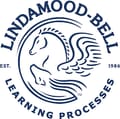
Lindamood Phoneme Sequencing
- Issue Areas
- K-12 education
- Outcomes
- Elementary and middle school success
Program overview
Improving phonetic skills: The Lindamood Phoneme Sequencing Program (LiPS) is a multisensory educational approach that enhances reading, spelling, and speech skills by developing phonemic awareness and teaching effective phoneme processing and sequencing.The program recommends about 20 to 50 minutes of daily intervention. Its goal is to improve children’s decoding abilities and spelling accuracy while promoting clearer speech.
Delivering specialized phonetic instruction in the classroom: LiPS relies on teachers to implement the framework. Teachers can enroll in training sessions through LiPS or utilize the LiPS Teacher Manual and computer-supported activities to deliver the curriculum. This framework can be utilized in whole-class, small-group, and one-on-one settings as a supplement to an existing language arts curriculum.
Teaching how to decode words and identify sounds: The program begins with activities that correct lip, tongue, and month placements when producing sounds. Then, students learn how to sequence and recognize specific sounds. Additionally, LiPS incorporates guided instruction to reinforce letter patterns, context clues, and sight words.
Providing support for all age groups and abilities: This program is suitable for all ages and grade levels, with a specific emphasis on kindergarten through third grade. LiPS can also be implemented with students of any learning ability.
- Strategies
-
Literacy curricula and interventions
- Cost
-
$444.95 for a classroom kit (2015)
Two studies with a rigorous design suggest that there is some evidence for LiPS as a strategy for improving student reading comprehension.
- This assessment is based on evidence from a 2015 research synthesis.
Note: This content is under review.
Integrate with a curriculum: Teachers should integrate LiPS activities into their general language arts curriculum to create a cohesive learning experience. LiPS can be used to provide additional support to students who struggle with reading. Using observational and assessment data can allow teachers to identify students who would benefit most from additional support.
Provide comprehensive training and professional development: Educators should receive comprehensive training in LiPS before implementing the program to ensure it is implemented with fidelity. School administrators also should support on-going professional development on the latest research, methodologies, and advancements in phonemic awareness instruction.
Introduce a multisensory approach: To cater to different learning styles, lessons should be interactive and multisensory, involving visual, auditory, and kinesthetic-tactile experiences. For example, in the LiPS program, students could see a letter, hear its sound, and then articulate it themselves. This approach accommodates a diverse range of learners.
Create opportunities for consistent practice: Teachers should create opportunities for consistent practice and reinforcement of learned skills. Additionally, consistent practice allows teachers to monitor student progress and adapt instruction to best fit their needs.